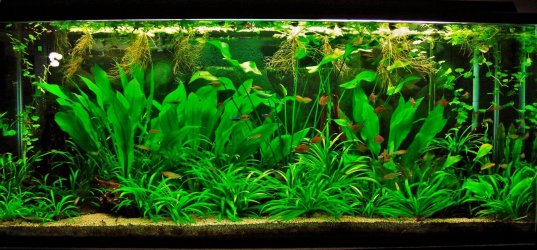An Echinodorus species certainly, in the emersed (as opposed to submersed) leaf form. Without the flower and inflorescence, these species are not that easy to identify.
My review of Lehtonen's Key to the species in his "An integrative approach to species delimitation in Echinodorus (Alismataceae) and the description of two new species" (2008) leads me to suggest possibly E. subalatus, or perhaps E. grisebachii which is a highly polymorphic and phenotypically plastic species (Lehtonen, 2008). "Radican sword" refers to E. cordifolius [I provided an explanation of the name and other data on this species in another thread a couple of weeks back] and I wouldn't think this is the same plant because of the leaf description including "ovate to oval," but I can't be certain. If an inflorescence arises, and flowers appear, you/we will have better evidence for a more accurate ID.
"Emersed" means the roots are in a moist substrate (as in a marsh or bog) while the leaves grow into the air. Grown in this state, and provided the substrate is nutrient-rich, the plant will send out inflorescences and flowers will be produced from the nodes, followed of course by seeds. "Submersed" means the entire plant is grown under water, and the leaves will be shaped differently and constructed differently since submersed leaves have somewhat different functions than emersed. Flowers will not be produced, but adventitious plants will grow from the nodes of the inflorescences.








